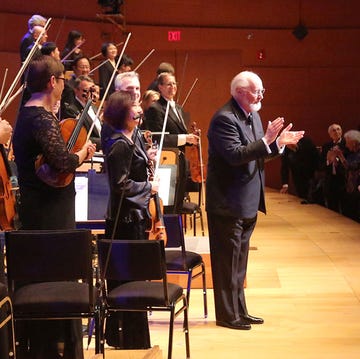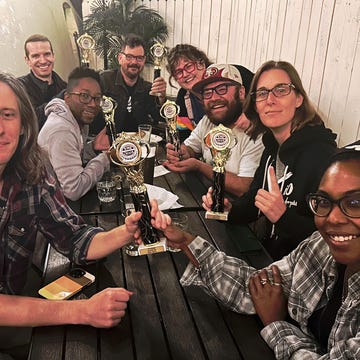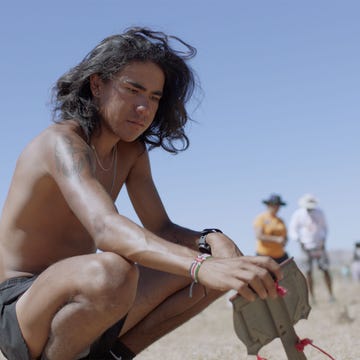In January, I started hiking every weekend in the Santa Cruz Mountains. After a few months of regular exposure to redwoods and ferns, manzanita and coyote brush—plants native to California—the front yards in my Bay Area neighborhood started to look garish. Wandering by the mishmash of palm trees, Japanese maples, rosebushes, and Carolina cherry laurel hedges, I felt as if I was walking past coral reefs. My eyes had gotten used to nature, and now everything else looked wrong.
Californians have a long-standing affection for native flora. In 1977, we passed the Native Plant Protection Act, one of the first laws in the country to formalize protection of rare and endangered native plants. These species have evolved over millennia to cope with droughts and weather extremes, yet natives are often missing in our gardens, on corporate campuses, and in civic spaces.
“For the last 150 years, we’ve been polluting the environment with non-native plants,” says Charles Miller, who chairs the Los Angeles chapter of the Climate Reality Project, a nonprofit group that advocates for policies to mitigate climate change. “It’s also crazy when you consider that we’re fighting over the Colorado River and other water resources and a big chunk of residential water is going to water plants that don’t have any business being here.”
In Los Angeles, for instance, less than 3 percent of the city’s street trees are native. “Many California cities have few or no native trees on their lists of approved street trees,” says Erica Spotswood, an ecologist and the director of science at Bay Area–based Second Nature Ecology and Design, a consulting firm that specializes in integrating nature into urban design. “We’ve decided that our urban spaces are for non-native trees only. That’s a weird conclusion. Why?”
It begins with the people in charge of selecting the trees: City arborists have not historically prioritized native species. Landscape crews are given limited hours and budgets, meaning that the care needed to support native plants may not be possible. “Maintenance is the elephant in the room,” says Sarah Kuehl of Einwiller-Kuehl, an Oakland-based landscape architecture firm. “Bioswales [areas planted with natives to manage stormwater] look like holy hell all across the Bay Area. I have many urban public clients that would love to have native-plant gardens, but their maintenance budgets only allow them to have extremely low-maintenance installations of trees, grass, and bark mulch.”
At this critical time, natives are not just a nice-to-have; they’re a need-to-have. The loss of native habitat from land development and climate change is putting many species at risk. In California, which has more animal and plant species than any other state, some 300 plants and 175 creatures are in trouble, including the Shasta snow wreath, Western bumble bee, and burrowing owl. Ecologists are wary of overpromising and underdelivering, but a 2021 review produced at RMIT University in Melbourne, Australia, found “a positive influence of native plants on at least one measure of biodiversity, justifying [natives’] priority in urban plantings to support native animals.” A 2018 University of Delaware study indicates that natural habitats need to be 70 percent native plants by biomass to attract enough native insects to sustain a native, insectivorous bird population. Below that 70 percent threshold, the birds began to reproduce less.
This percentage informed AB 1573, a bill introduced in 2023 by former assembly member Laura Friedman, which was the first attempt in California to mandate low-water native plantings. The legislation originally called for 75 percent native plants in civic and commercial use but was watered down to 10 percent and then diluted to the point of irrelevance to include non-native plants, before getting shelved. Proponents like Miller are hopeful that they’ll get another shot.
Spotswood and others are unsure about mandating native plantings. “I think it could be a good way to increase market demand,” she says. “But I also worry about unintended consequences. In urban landscapes, there is a surprising amount of pushback to native plants, and you might create even more of a backlash. Anytime you tell people what to do, you risk polarization. It’s an argument for more carrots and fewer sticks.”
In the meantime, individual cities are attempting local change. In 2020, Los Angeles developed a detailed biodiversity index, modeled after Singapore’s. The index quantifies such things as the quality of different habitats and the management of threatened and endangered species and subdivides L.A. into 16 small but distinct ecosystems, each one having different native-plant populations. “Our goal was to get the city staff to landscape with appropriate hypernative plants,” says Andy Shrader, a former director of environmental affairs for the L.A. City Council’s District 5. San Diego is developing a countywide native-landscaping plan that encourages “75 percent locally native species.” Change is possible.
I’m looking at my own backyard with fresh eyes now. “There’s benefits to wildlife, but I think there are benefits to human well-being from having a connection to the place that you live in,” says Spotswood. “You appreciate the native ecosystem and the beauty of nature around you, and you have a set of associations and memories around that. And if you replicate some of that in the urban landscape, it’s creating a link to that attachment.”•
Lydia Lee writes frequently about design and architecture in the San Francisco Bay Area and is a local bicycle advocate.














